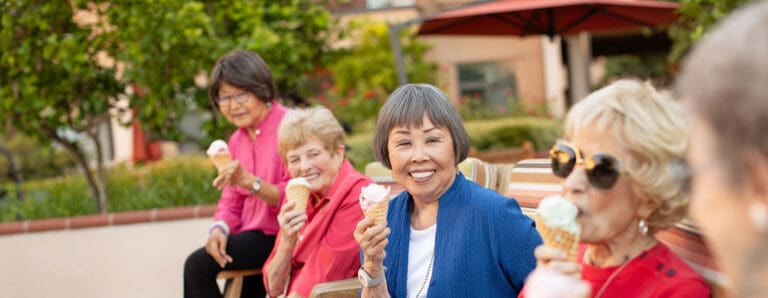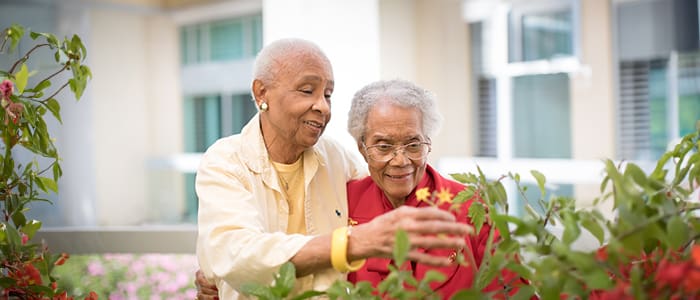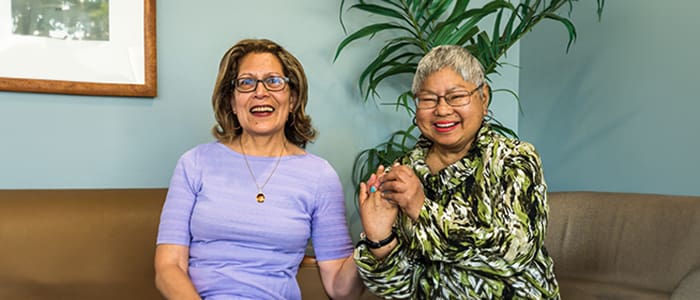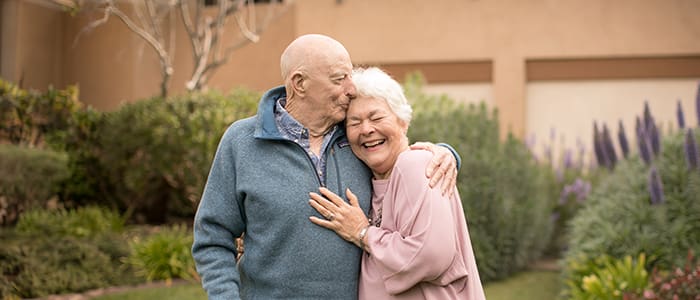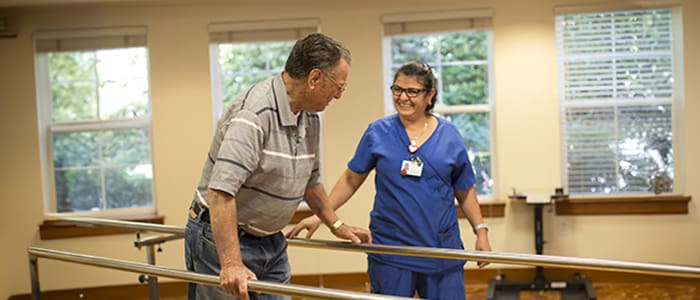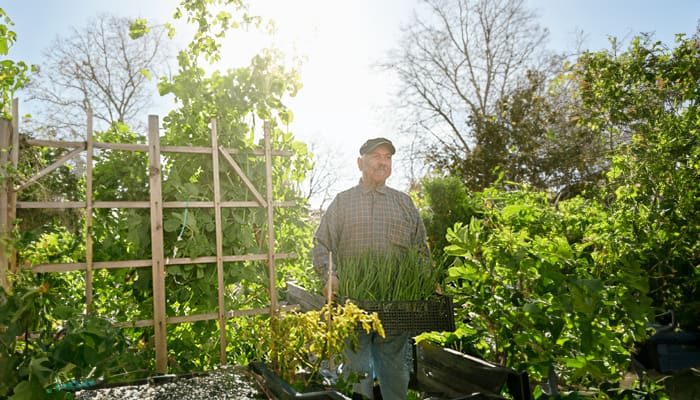October 19, 2018
The Great ShakeOut: Creating a Culture of Safety at Covia
On Thursday, October 18th, residents and staff throughout Covia participated in the Great ShakeOut, an earthquake safety drill. From Santa Rosa to Southern California, Covia took time to “Drop, Cover, and Hold On” and then gathered to review and reflect.
“An earthquake drill like the Great ShakeOut is an example of staff and residents increasing their safety awareness by practicing what they have learned,” says Grant Edelstone, Senior Director of Risk Management. “When a person drops, covers and holds on and then responds to a simulated fire or burst pipe or power outage, they increase their readiness for an actual earthquake.”
Even before the event, people were getting prepared. Covia’s Resident Service Coordinators working in Senior Affordable Housing communities throughout California assisted Housing Administrators with a pre-drill information meeting. Topics discussed included an explanation of the Great Shakeout and what was to be expected as well as evacuation options and routes. San Francisco Towers offered an Emergency Preparedness Department Update in advance of the drill and invited residents to prepare in advance by scouting out the safest place to be in their apartment in case of an earthquake.
San Francisco Towers, which was built after the 1989 Loma Prieta earthquake, has participated in the drill for years. Executive Director Christina Spence says, “We participate so residents and staff are prepared for the likely event of an earthquake that impacts our community.” The drill at the Towers involved more than Covia staff and residents, Spence reports. “Our California Department of Public Health Life Safety surveyor showed up right at 10:18. She ‘dropped, covered and held’ right along with us!”
Sadie Bracy, Housing Administrator at Jennings Court in Santa Rosa says, “We made noise with pots and pans and flickered the lights to simulate an earthquake. Two residents actually got on the floor under the table! Then we talked about the potential impacts of an earthquake afterword. We also talked about the safety of the building and installing the seismic gas shut off valve for more safety of Jennings Court.”
At Support Services, Covia’s administrative offices in Walnut Creek, an announcement over the PA alerted everyone in the building to the start of the drill. Afterwards, staff received a demo on go-bags and the locations of safety equipment and exits. “Last year during the fire [in Santa Rosa], I heard more than one resident say they’d been told to prepare a go-bag, but they didn’t think they’d actually need it,” says Laura Darling, a member of the Covia Safety Committee. “You don’t know you’ll need it until you do.”
Covia also prepared for the safety of seniors who would be unable to move themselves in the case of an emergency. At Webster House Health Center in Palo Alto, everyone participated in the drill. “All 3 floors participated along with vendors and home health agencies in the community during the drill. We had families and volunteers participating too,” says Assistant Executive Director Linda Hibbs. “I was stationed on 4th floor and the staff actively participated and moved the residents to a safe location.”
Hibbs continues, “After the drill was over we discussed why we have drills, what to do in a drill and how did the staff and residents think the drill had gone. The residents said thank you to the staff for practicing the drill and including them too. A few residents said they were happy that Webster House cared enough about them to practice if an earthquake happened and included residents in the drill.”
These drills are valuable preparation, Edelstone explains. “When there is a real earthquake, staff may react faster without thinking because of their practice. It can help them whether at home, work or traveling. Similarly, regular fire, disaster, active shooter and other drills increase safety readiness.”
And drills are just one part of building a culture of safety at Covia. “Covia has a commitment to safety in all levels of the organization,” says Edelstone. “Covia promotes a safety culture. This culture of safety’s goal is to achieve consistently safe operations that minimized adverse events. It represents a blame-free environment where everyone is able to report mistakes or errors or near misses or safety hazards, without fear of reprimand or punishment. A culture of safety encourages staff collaboration to solve safety problems. It strives to prevent or reduce errors and improve overall quality.”
Sadie Bracy at Jennings Court says, “A culture of safety means we anticipate that there will be an emergency at one point and we prepare ahead of time for it. That we take keeping our residents safe very seriously. And that we are constantly trying to improve our emergency responses.”
